CorPower Teams Up with SwitchH2 for Wave Powered Green Ammonia Project
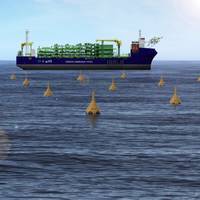
Swedish wave energy company CorPower Ocean has partnered with SwitchH2, offshore floating production systems developer for the delivery of green hydrogen and green ammonia, to deliver industrial-scale floating green ammonia production facility partially powered by wave energy.With backing from Norway-based BW Offshore and Dutch Oceans Capital, SwitcH2 is leading the development of industrial-scale offshore green hydrogen and green ammonia production units based on proven FPSO (floating production…
LR and SHI Join Forces for Green Ammonia FPSO System

Lloyd’s Register (LR) has signed a memorandum of understanding (MoU) with Samsung Heavy Industries (SHI) for the joint development of a floating production, storage, and offloading (FPSO) system for green ammonia. The FPSO process has been widely used in the oil and gas industries, but its application for ammonia is relatively new. The unit will use renewable energy to provide power for electrolysis of seawater to produce green hydrogen, which will be combined with nitrogen and synthesized to produce green ammonia…
Yara and ACME Sign Ammonia Supply Agreement
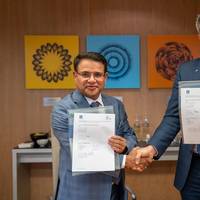
Yara and GHC SAOC, a wholly owned subsidiary of India’s Acme Cleantech, have signed a binding agreement for the supply of ammonia with reduced CO2 emissions from Acme to Yara on a long-term basis.Both companies had previously signed a non-binding offtake Term Sheet and the current agreement concludes 18 months of negotiations during which the regulatory framework and certification regime have evolved significantly, creating a suitable environment for such long-term contracts.The long-term offtake agreement covers the supply of 100…
Researchers Warn on Eutrophication Potential of Ammonia

Switching to ammonia as a marine fuel could create new problems, according to a new study undertaken by researchers from Chalmers University of Technology in Sweden.The researchers carried out life cycle analyses for batteries and for three electro-fuels (hydrogen, methanol and ammonia). Eutrophication and acidification are some of the environmental problems that can be traced to the use of ammonia – as well as emissions of laughing gas (N2O), which is a very potent greenhouse gas.Ammonia (NH3) is a carbon-free fuel and has the advantage of a higher energy density than, for example, hydrogen.
Japan Takes the Lead on Ammonia as Maritime Fuel
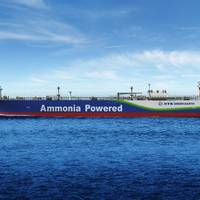
Late last year Japanese maritime leaders – Nippon Yusen Kabushiki Kaisha (NYK), Japan Engine Corporation, IHI Power Systems Co., and Nihon Shipyard Co., Ltd. – signed a series of contracts to buid the world's first ammonia-fueled medium gas carrier (AFMGC) equipped with Japan-make engines. The target is a completed ship by November 2026.While the project is significant, hurdles remain, namely:While development work is underway, today there is not yet a dual-fuel ammonia engine on the market…
ABS AIP for an Offshore Hydrogen/Ammonia Production Platform
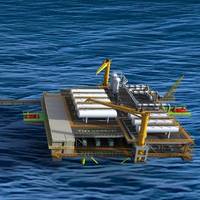
An offshore hydrogen and ammonia production platform design from the Korea Research Institute of Ships & Ocean Engineering (KRISO) has received approval in principle (AIP) from ABS.Developed by KRISO, the unit is designed to produce green hydrogen using electricity generated by a wind farm. Among the features, the design consists of a desalination system that desalinates seawater and turns it into clean water, an electrolysis system that produces hydrogen by electrolyzing water…
Maritime Transport: Fuels, Emissions and Sustainability
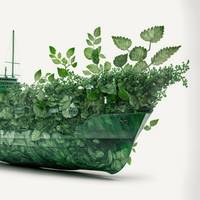
International trade by sea has long been a key part of the world economy and approximately 90% of traded commodities is reliant on shipping. Once wind-propelled in the days of sail, the current generation of ships now heavily rely on fossil fuels. Fossil fuel propulsion contributes to global warming with carbon emissions approximating 940 MtCO2e per year and also has health implications for communities surrounding ports through the release of air pollutants. The environmental impact of fossil-fuelled engines is further compounded by their use in port infrastructure…
AiP for Ammonia Floating Storage and Regasification Barge (A-FSRB)
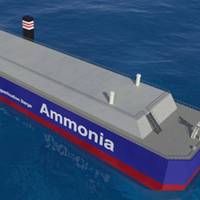
ClassNK issued an Approval in Principle (AiP) for an ammonia floating storage and regasification barge (A-FSRB) jointly developed by NYK Line, Nihon Shipyard Co., Ltd. (NSY), and IHI Corporation (IHI), reportedly the world's first AiP for A-FSRBs handling ammonia as cargo.Ammonia, which does not emit CO2 during combustion, has attracted attention for its use in thermal power plants and other applications as a potential fuel for decarbonization, while the development of onshore facilities for storage and regasification is a challenge.
Ammonia Marine Fuel Study Gets $6.7 Million Grant
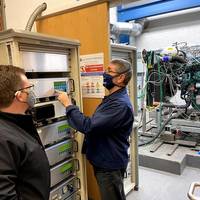
A group of academic and industrial partners were awarded a $6.7 million grant by the Engineering and Physical Sciences Research Council (EPSRC) to accelerate understanding, technologies and policies relating to the use of ammonia as a sustainable fuel. The project begins in June 2022 and will run for 5 years.Entitled Decarbonized Clean Marine: Green Ammonia Thermal Propulsion (MariNH3), the project brings together academics from Nottingham, Birmingham, Brighton, Cardiff and STFC…
Fortescue Future Industries Buys PSV from MMA Offshore for Green Ammonia Conversion
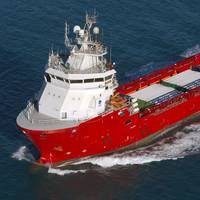
Australian offshore vessel owner MMA Offshore has completed the sale of the vessel “MMA Leveque” to a subsidiary of Fortescue Future Industries (“FFI”) for US$7.75M.FFI plans to convert the 74.87 meters long platform supply vessel to dual fuel with the objective of operating almost totally on green ammonia.
Ship Design: Ammonia FSRU Concept Studied by Mitsubishi Shipbuilding, Mitsui O.S.K. Lines
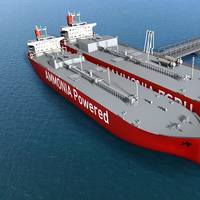
Mitsubishi Shipbuilding Co., in a joint effort with Mitsui O.S.K. Lines, Ltd. (MOL), completed a conceptual study on a floating storage and regasification unit (FSRU) for ammonia, a study is aimed at promoting the use of ammonia as an energy source and the introduction of the ammonia FSRU globally.The Ammonia FSRU is a floating facility for receiving and storing ammonia which is transported in a liquid state from its production area, and the stored ammonia is then heated and regasified onboard for transfer to an onshore pipeline.
Core Power: Decarbonizing Shipping With Nuclear-powered Offshore Ammonia Production Plants

Advanced nuclear energy technology company Core Power is working on a concept for an offshore facility that combines advanced nuclear power with an offshore ammonia production facility, which would enable affordable production of green ammonia for shipping."The production of green ammonia is a key component of the decarbonization plans for international shipping. While the largest 17,000 ships are unlikely to find economic value in using hydrogen-derived green fuels, a very significant…
Belgian Shipowner, Canadian Fertilizer Firm Set to Build Ammonia-fueled Ship

Belgium-based shipowner Exmar is partnering up with a Canadian fertilizer company to build jointly develop and build a low-carbon, ammonia-fueled vessel which they aim to deploy as early as 2025."Partners for over three decades in transporting ammonia globally, Nutrien is one of the world’s largest producers of low-carbon ammonia and is a leading player and innovator in the transportation of liquefied gas products," Exmar said."Nutrien and EXMAR support the decarbonization of shipping and the International Maritime Organization’s (IMO) Green House Gas (GHG) Strategy to reduce emissions.
Yara Joins Study on Ammonia as Ship's Fuel
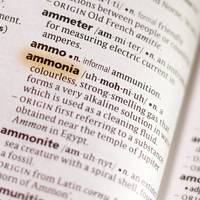
NYK Line, Nihon Shipyard Co. Ltd. (Nihon Shipyard), and Nippon Kaiji Kyokai (ClassNK) signed an MOU with Yara International (Yara) to jointly study the practical application of an ammonia-fueled ammonia gas carrier (AFAGC) that uses ammonia as its main fuel.Carbon dioxide (CO2) is not emitted when ammonia is burned, so it is viewed to have promise as a next-generation fuel that could mitigate shipping’s impact on global warming. In addition, it is said that zero emissions can be realized by utilizing CO2-free hydrogen as a raw material for ammonia.
The Path to Zero: Study Shows Hydrogen-Based Ship Fuel Projects on the Rise
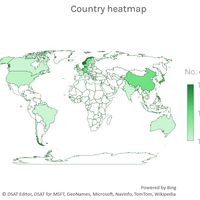
The Getting to Zero Coalition’s updated Mapping of Zero Emission Pilots and Demonstration Projects uncovers emerging trends, sees a strong climb in the number of identified projects as well as increased activities in Asia.The 'fuel of the future' debate is one of the hottest topics in maritime circles, as shipowners eye ever tightening emission regulations through 2050. While there is no 'silver bullet' solution, the Getting to Zero Coalition’s biannual Mapping of Zero Emission Pilots and Demonstration Projects outlines the spread and scope of existing zero emission projects…
Europe's Largest: CIP to Launch Offshore Wind-powered Ammonia Plant in Denmark
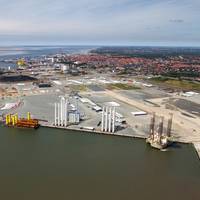
Danish energy infrastructure investments firm Copenhagen Infrastructure Partners is looking to build what it says is Europe’s largest production facility of CO2-free green ammonia, with the final product aimed at the shipping and agriculture sector as a means to reduce emissions.The project will be located in the town of Esbjerg on the west coast of Denmark, where the facility dubbed "Power-to-X-facility" will convert power from offshore wind turbines to green ammonia. This will be used by the agriculture sector as CO2-free green fertilizer and by the shipping industry as CO2-free green fuel.





